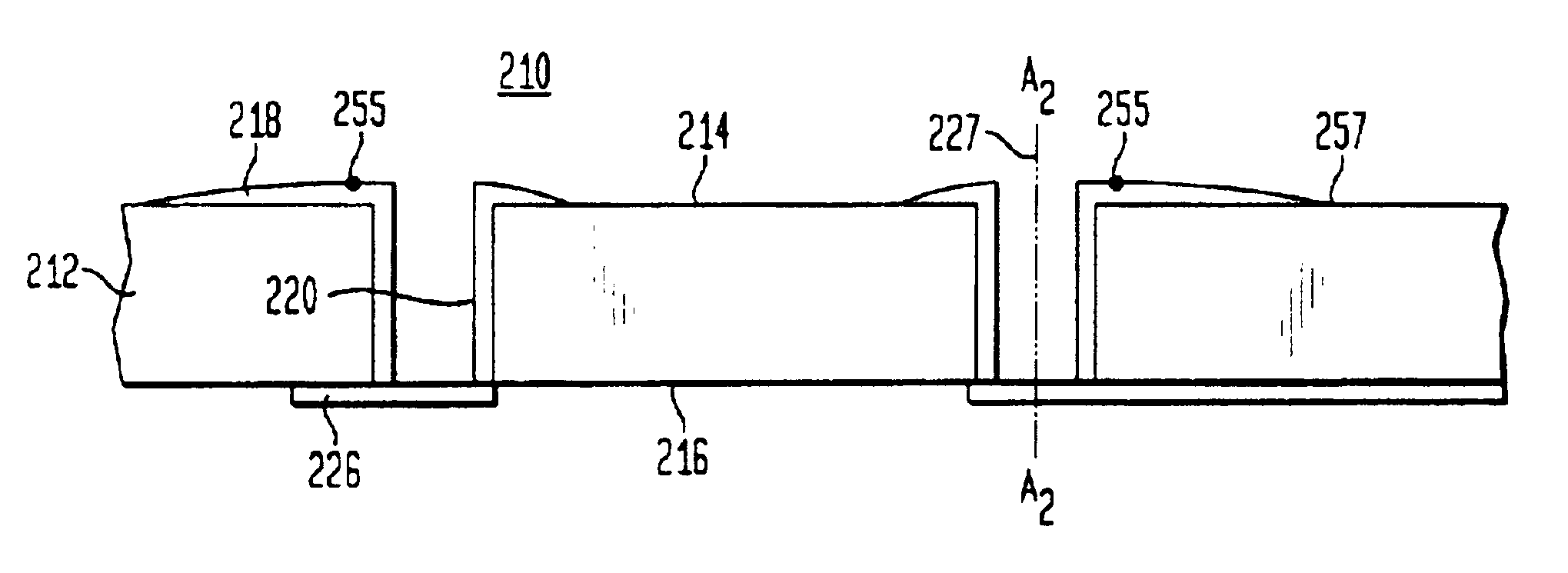Off-center solder ball attach assembly
a solder ball and assembly technology, applied in the direction of printed circuit parts, lithographic masks, non-printed masks, etc., can solve the problems of reducing the reliability of the connection component, poor bonding between the molten solder and the contact pad, and adverse effects of solder ball oxidation on the ability of the solder ball to wet to and ultimately bond with the contact pad
- Summary
- Abstract
- Description
- Claims
- Application Information
AI Technical Summary
Benefits of technology
Problems solved by technology
Method used
Image
Examples
Embodiment Construction
FIGS. 2A-2D shows a preferred method of attaching solder balls to a connection component that minimizes the voiding problems described above. Referring to FIG. 2A, a connection component 110 includes a flexible dielectric layer 112 having a first surface 114 and a second surface 116 remote therefrom. The connection component 110 includes conductive pads 118 atop the first surface 114 and metalized vias 120 that extend between the first surface 114 and the second surface 116 of the dielectric sheet 112. Each via 120 has a center 121 and an open end 123 adjacent the first surface 114 of dielectric layer 112. The center 121 of via 120 shown in FIG. 2A is defined by axis A1—A1. Thus, the center 121 of each via 120 preferably in located along a line that is equidistant from the sidewalls of the via 120. Each via 120 may also include a closed end 125 remote from the open end 123. In the particular embodiment shown in FIG. 2A, the closed end 125 of via 120 is adjacent the second surface 11...
PUM
 Login to View More
Login to View More Abstract
Description
Claims
Application Information
 Login to View More
Login to View More - R&D
- Intellectual Property
- Life Sciences
- Materials
- Tech Scout
- Unparalleled Data Quality
- Higher Quality Content
- 60% Fewer Hallucinations
Browse by: Latest US Patents, China's latest patents, Technical Efficacy Thesaurus, Application Domain, Technology Topic, Popular Technical Reports.
© 2025 PatSnap. All rights reserved.Legal|Privacy policy|Modern Slavery Act Transparency Statement|Sitemap|About US| Contact US: help@patsnap.com



